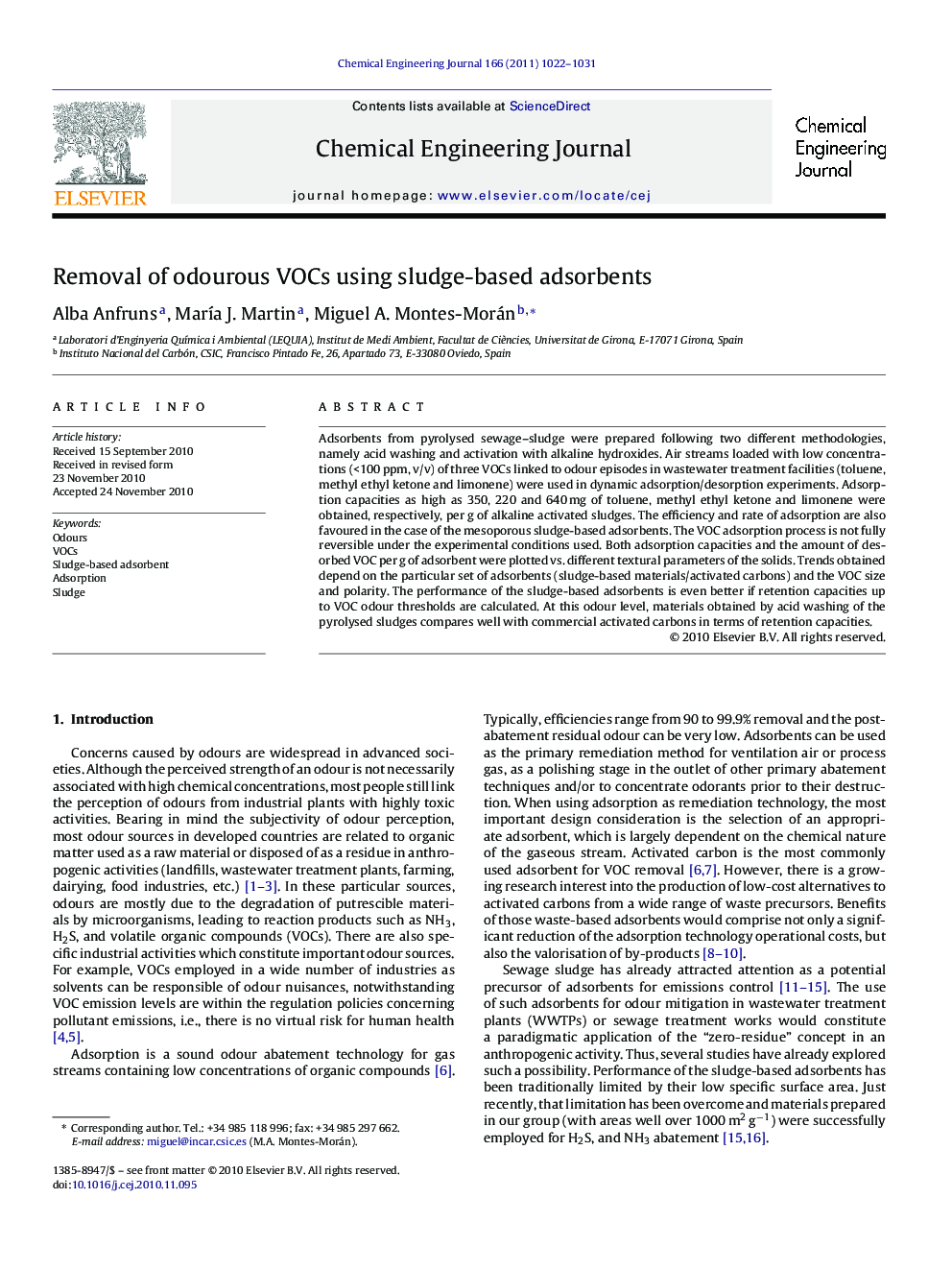| Article ID | Journal | Published Year | Pages | File Type |
|---|---|---|---|---|
| 151483 | Chemical Engineering Journal | 2011 | 10 Pages |
Adsorbents from pyrolysed sewage–sludge were prepared following two different methodologies, namely acid washing and activation with alkaline hydroxides. Air streams loaded with low concentrations (<100 ppm, v/v) of three VOCs linked to odour episodes in wastewater treatment facilities (toluene, methyl ethyl ketone and limonene) were used in dynamic adsorption/desorption experiments. Adsorption capacities as high as 350, 220 and 640 mg of toluene, methyl ethyl ketone and limonene were obtained, respectively, per g of alkaline activated sludges. The efficiency and rate of adsorption are also favoured in the case of the mesoporous sludge-based adsorbents. The VOC adsorption process is not fully reversible under the experimental conditions used. Both adsorption capacities and the amount of desorbed VOC per g of adsorbent were plotted vs. different textural parameters of the solids. Trends obtained depend on the particular set of adsorbents (sludge-based materials/activated carbons) and the VOC size and polarity. The performance of the sludge-based adsorbents is even better if retention capacities up to VOC odour thresholds are calculated. At this odour level, materials obtained by acid washing of the pyrolysed sludges compares well with commercial activated carbons in terms of retention capacities.
